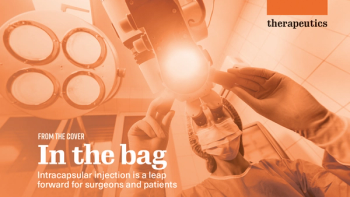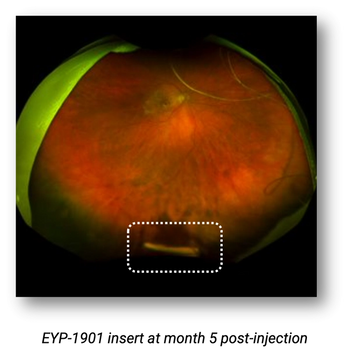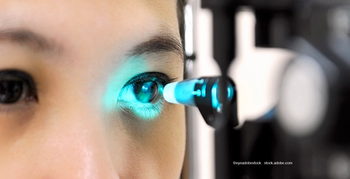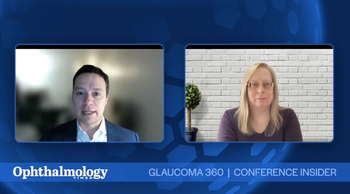
Approval is based on year 1 data from the Phase III KESTREL and KITE trials investigating brolucizumab 6 mg versus aflibercept 2 mg in DME patients.

Approval is based on year 1 data from the Phase III KESTREL and KITE trials investigating brolucizumab 6 mg versus aflibercept 2 mg in DME patients.

April is Presbyopia Awareness Month. Brieann K. Adair, OD, of NYU Langone Health, speaks with Ophthalmology Times’ Sheryl Stevenson about the importance of Presbyopia awareness, treatment options and more.

If the BLA is approved, the company could receive 12 years of marketing exclusivity for an FDA-approved alternative for the most frequently used anti-VEGF treatment in wet AMD patients in the United States.

A separate analysis will be presented at the American Academy of Neurology 2022 Annual Meeting, showing that UPLIZNA reduced pan associated with NMOSD over 3 years.

Bausch + Lomb and Clearside Biomedical Inc. are rolling out the new therapeutic, approved by the FDA for suprachoroidal use for the treatment of macular edema associated with uveitis, a form of eye inflammation.

Lower doses vs higher ones are equally effective for treating disease

The company notes that its clinical trial of the light delivery system meets the primary efficacy endpoint, and can offer hope to patients with dry AMD who are experiencing vision loss and currently have limited treatment options.

Raj Kannan, the new CEO of Aerie Pharmaceuticals, talks with Ophthalmology Times' David Hutton about what's coming down the pipeline for Aerie.

Drug is prescribed as adjunctive therapy for those with glaucoma

The injection of dexamethasone intraocular suspension 9% into the capsular bag may change the standard of care following cataract surgery.

The study, conducted with Tufts Medical Center, represents a breakthrough showing that Microdose Array Print technology can provide similar benefits of non-preserved medications.

The latest announcement comes after the previously granted ODD for polihexanide in acanthamoeba keratitis by the FDA and EMA.

Dr. Raymond Douglas discusses the real-world adherence to teprotumumab as a treatment for thyroid eye disease.

TearSolutions Inc. is preparing to conduct two trials, one in a primary Sjögren’s Syndrome patient population and the second in a potentially less severe general dry eye population for the treatment of DED.

Dr. Quan Dong Nguyen reviews a Monte Carlo simulation that showed evidence that treating severe NPDR with anti-VEGF therapy garners positive results.

The NGF0121 study will enroll 100 patients and will use Schirmer's test and the Symptom Assessment Questionnaire in Dry Eye questionnaire as its co-primary endpoints to measure improvement in signs and symptoms of dry eye over time.

Kato Pharmaceuticals will study the efficacy of Resolv ER for the treatment of vitreomacular attachment.

Arshad M. Khanani, MD, MA, told attendees at the Bascom Palmer Eye Institute’s 19th annual Angiogenesis, Exudation, and Degeneration 2022 Virtual Edition that data from the part A of the KALAHARI trial is encouraging, showing that THR-149 has the potential to improve vision in patients with DME who have a sub-optimal response to anti-VEGF therapies.

After 2 years, the improvements in vision and anatomy were sustained with extended dosing out to every 16 weeks in a high percentage of patients.

During the Glaucoma 360 New Horizons Forum, the spotlight was cast upon sustained release injectables, including innovations that have been flourishing over the past year despite, or perhaps because of, a continuing worldwide pandemic.

Jay S. Duker, MD, who presented data at the Bascom Palmer Eye Institute’s 19th annual Angiogenesis, Exudation, and Degeneration 2022 Virtual Edition, noted that previously treated patients showed a significantly reduced treatment

The introduction of new devices is possibly the single most influential factor currently driving the glaucoma market, said Kristen Harmon Ingenito, MBA, in her presentation during the New Horizons Forum at the 2022 Glaucoma 360.

During a presentation at the Bascom Palmer Eye Institute's Angiogenesis, Exudation, and Degeneration 2022 Virtual Edition conference, David S. Boyer, MD, explained that the drug, which is being considered to treat diabetic retinopathy, renal disease, and age-related macular degeneration, is intended to be an alternative therapy to monthly chronically administered intravitreal injections of anti-VEGF drugs.

Ora Chief Medical Officer Gustavo De Moraes, MD, PhD, MPH, speak with Ophthalmology Times®' Sheryl Stevenson to discuss some of the cutting-edge advancements in therapies and diagnostics for the treatment of glaucoma patients.

Glaucoma 360's co-founders and co-chairs Adrienne L. Graves, PhD, and Andrew G. Iwach, MD, speak with Ophthalmology Times®' Sheryl Stevenson on what attendees can expect from this year's annual meeting.